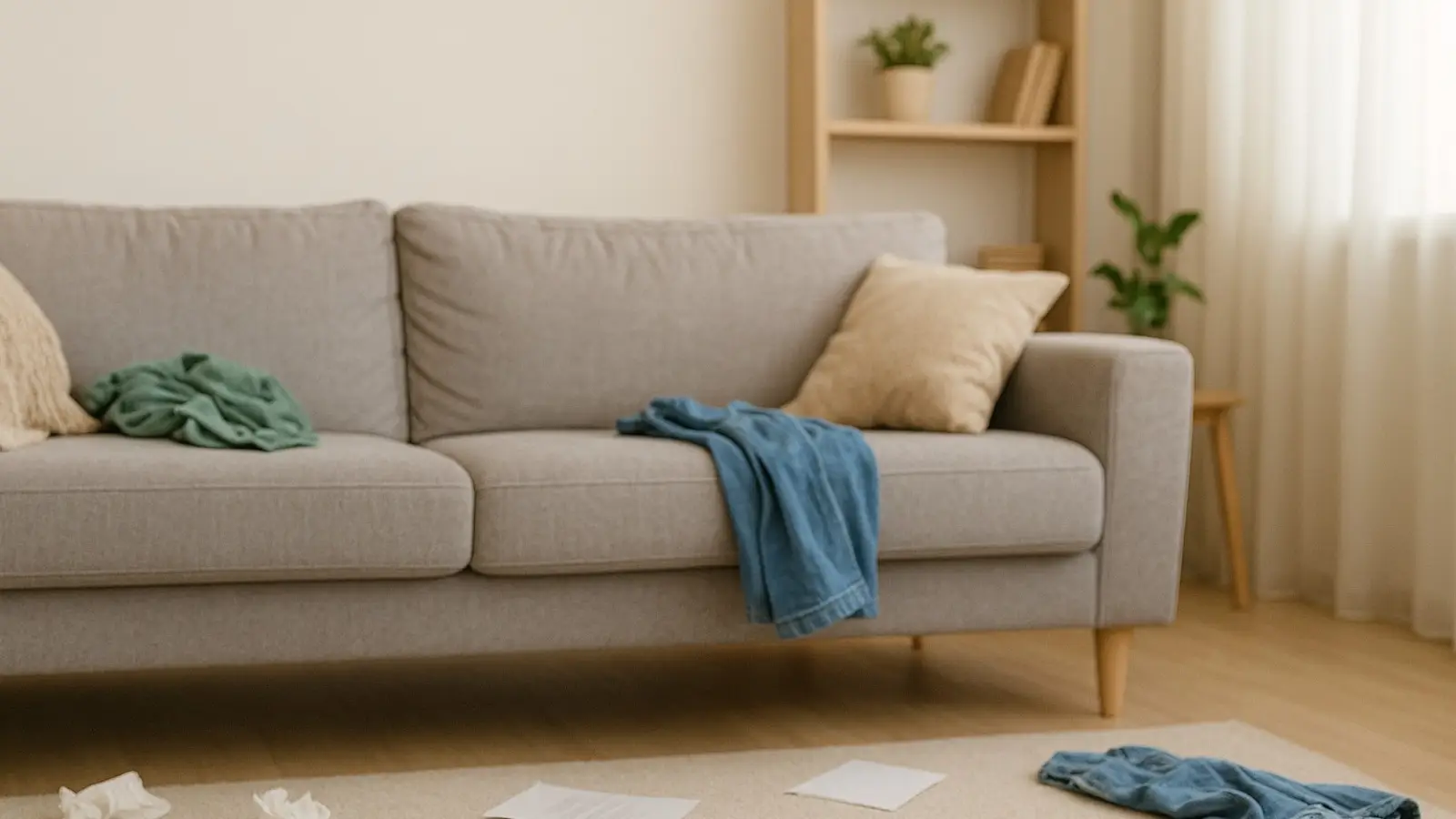https://boda.su/en/posts/id821-the-one-minute-rule-a-simple-way-to-beat-clutter-and-stress
The One-Minute Rule: A Simple Way to Beat Clutter and Stress
How the One-Minute Rule Can Bring Order to Your Home and Mind
The One-Minute Rule: A Simple Way to Beat Clutter and Stress
Discover the one-minute rule — a simple method to declutter your space, ease anxiety, and build lasting habits that bring calm and control to everyday life.
2025-10-15T11:06:10+03:00
2025-10-15T11:06:10+03:00
2025-10-15T11:06:10+03:00
When Cleaning Turns into Stress
Many people start their day promising themselves to finally clear the desk, put things away, or at least wash that cup. But by evening, fatigue wins, and chores get postponed once again. Over time, these small undone tasks pile up—creating not only physical clutter but mental chaos as well.
The Simple Rule That Actually Works
Psychologists suggest keeping it simple. One effective approach is known as the one-minute rule: if something takes less than 60 seconds to complete, do it immediately.
Placing keys where they belong, wiping the table, or closing an unnecessary browser tab—tiny actions like these might seem trivial, but they build a lasting sense of order and control.
Where the Idea Comes From
The concept originates from American psychologist Gretchen Rubin, who introduced it in her books about habit formation. Her observations showed that completing small, quick tasks not only helps maintain cleanliness but also reduces anxiety levels.
When a person finishes even a minor task, the brain registers it as a small success. Gradually, this reinforces the habit of completing what’s started—without the weight of self-pressure.
Why It Works
Applying the one-minute rule regularly frees you from the burden of small, nagging chores. Washing a mug right after tea, hanging clothes back up, or dusting a shelf—all these take less than a minute but prevent the buildup of mess and stress.
Professional organizers note that this method is especially helpful for those who work from home, as it keeps the environment tidy and focus intact.
A Rule for All Ages
Interestingly, the »one-minute approach” works well for children too. Simple, short tasks help them develop a sense of responsibility and appreciation for time.
Keep It Light, Not a Duty
Experts emphasize that the goal isn’t perfection. The method is most effective when practiced consciously and without pressure. Start small, and gradually let it influence more areas of life.
One Minute That Can Change Your Day
When clutter feels overwhelming, the best place to start is often the smallest. Sometimes, just one minute is enough to restore a sense of control—and bring order not only to your home but to your thoughts as well.
One-Minute Rule, Decluttering, Stress Relief, Productivity, Clean Home, Mental Clarity, Organization Tips, Gretchen Rubin, Habit Formation, Mindfulness
2025
articles
How the One-Minute Rule Can Bring Order to Your Home and Mind
Discover the one-minute rule — a simple method to declutter your space, ease anxiety, and build lasting habits that bring calm and control to everyday life.
Generated by Dall-e
When Cleaning Turns into Stress
Many people start their day promising themselves to finally clear the desk, put things away, or at least wash that cup. But by evening, fatigue wins, and chores get postponed once again. Over time, these small undone tasks pile up—creating not only physical clutter but mental chaos as well.
The Simple Rule That Actually Works
Psychologists suggest keeping it simple. One effective approach is known as the one-minute rule: if something takes less than 60 seconds to complete, do it immediately.
Placing keys where they belong, wiping the table, or closing an unnecessary browser tab—tiny actions like these might seem trivial, but they build a lasting sense of order and control.
Where the Idea Comes From
The concept originates from American psychologist Gretchen Rubin, who introduced it in her books about habit formation. Her observations showed that completing small, quick tasks not only helps maintain cleanliness but also reduces anxiety levels.
When a person finishes even a minor task, the brain registers it as a small success. Gradually, this reinforces the habit of completing what’s started—without the weight of self-pressure.
Why It Works
Applying the one-minute rule regularly frees you from the burden of small, nagging chores. Washing a mug right after tea, hanging clothes back up, or dusting a shelf—all these take less than a minute but prevent the buildup of mess and stress.
Professional organizers note that this method is especially helpful for those who work from home, as it keeps the environment tidy and focus intact.
A Rule for All Ages
Interestingly, the “one-minute approach” works well for children too. Simple, short tasks help them develop a sense of responsibility and appreciation for time.
Keep It Light, Not a Duty
Experts emphasize that the goal isn’t perfection. The method is most effective when practiced consciously and without pressure. Start small, and gradually let it influence more areas of life.
One Minute That Can Change Your Day
When clutter feels overwhelming, the best place to start is often the smallest. Sometimes, just one minute is enough to restore a sense of control—and bring order not only to your home but to your thoughts as well.

